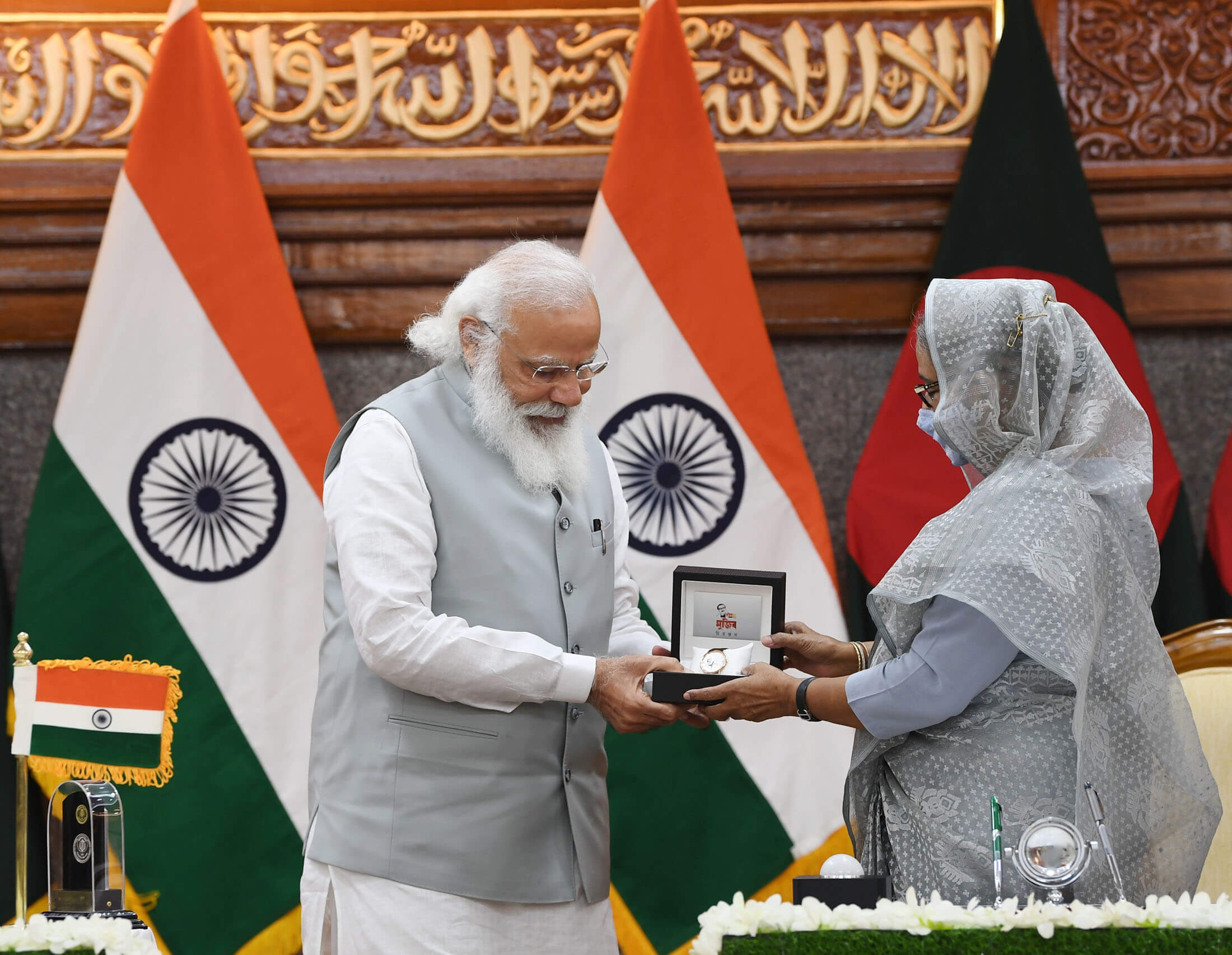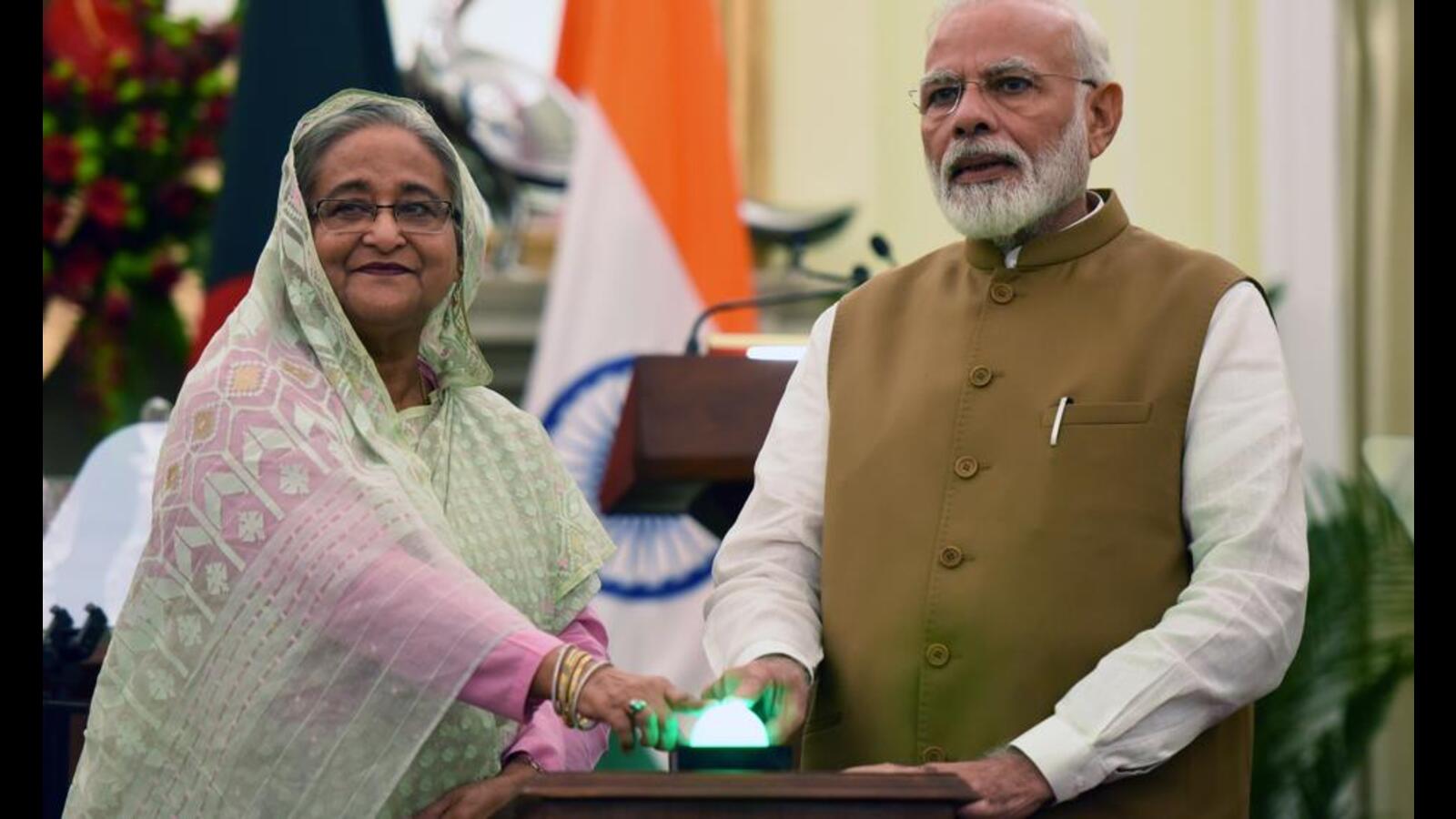Sheikh Hasina’s visit to India could open a new chapter in India-Bangladesh relations

Sheikh Hasina’s visit to India could open a new chapter in India-Bangladesh relations
During her visit to New Delhi, the Bangladeshi PM will mark the Golden Chapter of bilateral ties between their two countries since the outbreak of COVID-19.
A new chapter in India-Bangladesh bilateral relations is anticipated to be written during Bangladesh Prime Minister Sheikh Hasina’s four-day visit to India from September 5 to 8. Her acceptance of an invitation from Prime Minister Narendra Modi to mark the Golden Jubilee of diplomatic ties between the two nations makes her visit even more noteworthy. After the COVID-19 breakout, Hasina will be making her first trip.
Sheikh Hasina’s visit is anticipated to follow a ministerial-level discussion on bilateral matters that would be addressed before the prime ministers’ private meetings on September 6. The discussion between the prime minister and the vice president is anticipated to be dominated by issues relating to bilateral commerce, road infrastructure, water sharing, and energy cooperation.
Indian and Bangladeshi bilateral ties have flourished thanks to close ties between the Modi government and the Awami League of Sheikh Hasina. Thus, Sheikh Hasina’s opponents are closely monitoring the Indian-Bangladesh relationship in Bangladeshi domestic politics. The Khaleda-led Bangladesh Nationalist Party (BNP), for instance, routinely criticizes the Awami League for being “extremely weak” while dealing with India. The Awami League will consequently greatly benefit from Sheikh Hasina’s impending visit. This essay attempts to analyze the likely results of Sheikh Hasina’s travel to India against this background.
Trade and Road Infrastructure

The “Swadhinata Sarak” is anticipated to be inaugurated by Modi and Sheikh Hasina (25 km long link road). A proposed name for the historic road that runs from Mujibnagar, Bangladesh, to Nadia, West Bengal, was put out by Bangladesh to acknowledge the road’s significant contribution to the nation’s War of Independence. The amicable neighbours emphasize reviving historical linkages between them to experience bygone glories and enhance their friendship because they have a similar heritage.
The opening of the Swadhinata Sarak represents the development of fraternal links between India and Bangladesh that go beyond just fulfilling strategic interests, in addition to the restoration of five antiquated train lines. The Comprehensive Economic Partnership Agreement (CEPA), which relates to commerce, may very well be finalized during Sheikh Hasina’s visit. After Bangladesh gave its permission, India has yet to accept the draft accord.
The Prime Ministers’ meeting will probably include a discussion of the CEPA draft. By ratifying the CEPA, both Bangladesh and India stand to gain.
The agreement allows the parties to maintain all benefits of their commercial relationship even if Bangladesh becomes a developing nation. Bangladeshi and Indian diplomatic relations have been hailed as historic as a result of this deal.
Cooperation while sharing water

In order to discuss the water-sharing arrangements for the rivers Muhuri, Gumti, Khowai, Dudhkumar, Monu, Dharla, and Feni that flow through neighbouring countries, the Joint Rivers Commission (JRC) conducted its 38th meeting on August 25 in New Delhi (after a 12-year break). The conversation mostly focused on cross-border concerns including exchanging flood data and mitigating the threat of river contamination. The two prime ministers are rumoured to finalize the water-sharing agreements following the JRC’s recommendations.
The language of a Memorandum of Understanding (MoU) for sharing the waters of the Kushiyara river was also finalized by the two parties. The two presidents will thus probably conclude the Kushiyara water-sharing arrangement. The river rises in Nagaland and flows along the Indo-Bangladesh border before receiving tributaries from Manipur, Mizoram, and Assam in India’s northeast (NER). The river is also a section of India’s National Waterway 16 (NW 16).
The river has been essential in connecting Kolkata, a coastal city, to the landlocked NER through protocol routes between India and Bangladesh. The Kushiyara and Surma rivers divide the canal as it passes through Nagaland and the neighbouring states of Manipur and Assam. The rivers join together to create the Meghna River at their place of confluence after meandering for a lengthy distance.
The primary protocol route, known as NW 2, runs from Kolkata to Sundarban, Chalna, Khulna, Mongla, Kaukhali, Barisal, Narayanganj, Aricha, Dhubri, and Pandu-Silghat in Bangladesh. The agreements for the shared rivers’ water sharing, which are planned to be completed during the upcoming visit, can be used as a model for further shared agreements.
The two countries must agree on water-sharing policies for all 54 rivers that cross their borders if they are to prevent any potential irritants in their bilateral relations. However, the Teesta transaction closing plans have been put on hold, which is noteworthy from this angle. The lack of consensus between the Modi administration and the West Bengal state government may be to blame for the protracted delay in finishing the much-awaited Teesta accord.
Inter-State Energy Cooperation Expanding

Along with launching the Maitree Thermal Power Plant together, the two prime ministers will travel for three days. In addition to the already existing and extremely crucial areas of commerce, connectivity, and water sharing that have come to characterize this endeavour would strengthen the growing area of energy security in India-Bangladesh ties, which has characterized their bilateral relationship over the years.
The 1,320 MW coal-based power station, which is Bangladesh’s biggest power plant to date, is adjacent to the Mongla Port and Sundarbans. Although the power plant proposal represents an expansion of energy cooperation between the neighbouring nations, environmental worries have been raised due to its closeness to the Sundarbans. The project has come under fire for its potentially detrimental effects on the waterways of the Sundarbans, particularly on the delicate river environment of the Pasur River, where it may significantly reduce aquatic biodiversity, particularly fish stocks.
After getting a lot of criticism for its environmental expenses, concerned authorities were forced to intervene and clarify that the facility uses cutting-edge technology to reduce its environmental effect by reducing air and water pollution.
Conclusion

India-Bangladesh relations have always been characterized by the fundamental principles of openness, mutual trust, collaboration, and respect. This is true regardless of whether the two countries share historical, social, or cultural affinities or if they cooperate to pursue common objectives. As the friendly neighbours take on new initiatives to deepen their links in the important fields of business, connectivity, energy, and water sharing, leaders from both countries have started to refer to this time as a “Sonali Adhyay” (golden chapter) in bilateral relations.
In fact, following the COVID-19 epidemic, prime leader Sheikh Hasina’s much-anticipated trip to India after a three-year absence may be considered another turning point in this illustrious time. Hasina’s visit still raises the question of whether her party Awami League will gain political leverage in the 2023 election.




